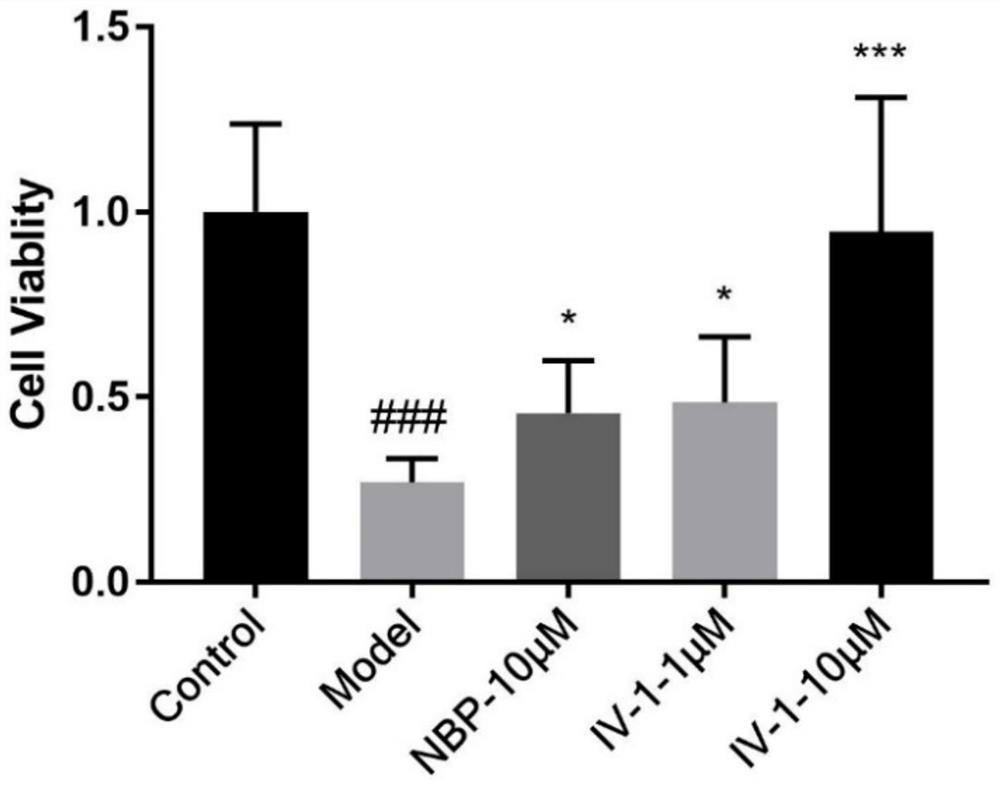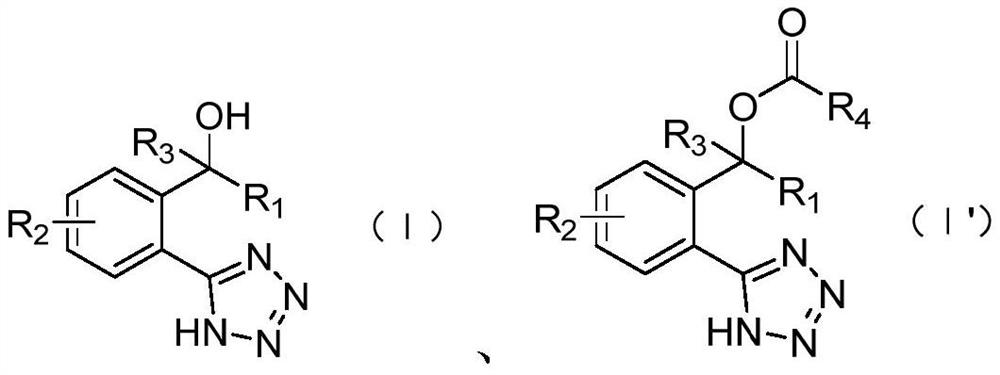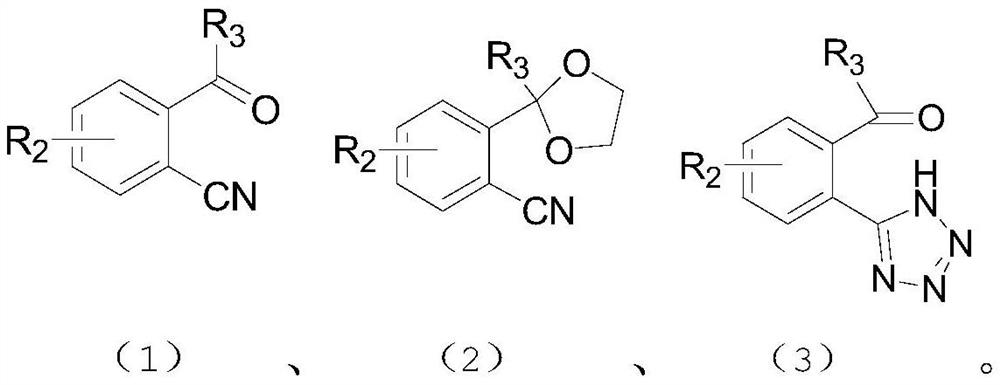Benzotetrazole derivatives and preparation thereof, pharmaceutical compositions containing benzotetrazole derivatives and application of benzotetrazole derivatives
A technology for phenyltetrazolium and derivatives, which is applied in the field of phenyltetrazolium derivatives and preparation, and can solve the problems of limited administration route, poor physical and chemical properties, difficult preparation process and the like
- Summary
- Abstract
- Description
- Claims
- Application Information
AI Technical Summary
Problems solved by technology
Method used
Image
Examples
Embodiment 1
[0110] Embodiment 1. Synthesis of intermediate 4-1-3
[0111]
[0112]Add (20g, 0.1mol) raw material 4-1-1, (44.5g, 0.25mol) NBS (N-bromosuccinimide), (720mg, 3mmol) AIBN (azobisiso Butyronitrile), (20ml) carbon tetrachloride, heated to reflux for 16h, cooled to room temperature, concentrated under reduced pressure to remove carbon tetrachloride, and obtained a mixture containing intermediate 4-1-2. (400ml) water was added to the mixture, heated to reflux for 24h, extracted with ethyl acetate to obtain an organic phase, dried over anhydrous sodium sulfate, concentrated under reduced pressure and evaporated to dryness of ethyl acetate, the resulting crude product was subjected to silica gel column chromatography (ethyl acetate:petroleum ether =1:50-1:10) to obtain about 8.4 g of white to pale yellow crystalline intermediate 4-1-3, with a yield of 40% and a purity of more than 99%. 1 H NMR 500MHz, CDCl 3 δ: 7.26 (d, 1H, ArH), 7.92 (dd, 1H, ArH), 7.98 (d, 1H, ArH), 10.31 (s,...
Embodiment 2
[0113] Embodiment 2: the synthesis of intermediate 4-1-5
[0114]
[0115] Step 1: Add (4.2g, 20mmol) intermediate 4-1-3, (6.2g, 0.1mol) ethylene glycol, (20ml) toluene, (275mg, 1.6mmol) p-toluenesulfonic acid in a single-necked flask and heat Reflux, use a water separator to remove water until the water volume in the water separator does not increase, and cool to room temperature. Saturated sodium bicarbonate solution was added until the water layer was neutral or alkaline, the water layer was separated, and the organic layer was concentrated under reduced pressure to obtain 4.5 g of light yellow oily semi-solid intermediate 4-1-4. 1 HNMR (CDCl 3 )δ: 1.32 (m, 4H, CH 2 ), 5.77 (s, 1H, CH), 7.69 (d, 1H, ArH), 7.77 (dd, 1H, ArH), 7.87 (d, 1H, ArH). Yield 89%. The purity is greater than 99%.
[0116] Step 2: (1g, 3.93mmol) intermediate 4-1-4, (1.28g, 19.65mmol) sodium azide, (1.05g, 19.65mmol) ammonium chloride, and (10ml) DMF were added in a single-necked flask , heated...
Embodiment 3
[0117] Embodiment 3: the synthesis of intermediate 4-1a-3
[0118]
[0119] Referring to the steps of Example 1, using (15 g, 0.1 mol) 5-chloro-2-methyl-benzonitrile 4-1a-1 as raw material, 7.1 g of white solid 4-1a-3 was obtained with a yield of 43%. Purity greater than 99%, ESI(M+H) + =166.
PUM
 Login to View More
Login to View More Abstract
Description
Claims
Application Information
 Login to View More
Login to View More - R&D
- Intellectual Property
- Life Sciences
- Materials
- Tech Scout
- Unparalleled Data Quality
- Higher Quality Content
- 60% Fewer Hallucinations
Browse by: Latest US Patents, China's latest patents, Technical Efficacy Thesaurus, Application Domain, Technology Topic, Popular Technical Reports.
© 2025 PatSnap. All rights reserved.Legal|Privacy policy|Modern Slavery Act Transparency Statement|Sitemap|About US| Contact US: help@patsnap.com



